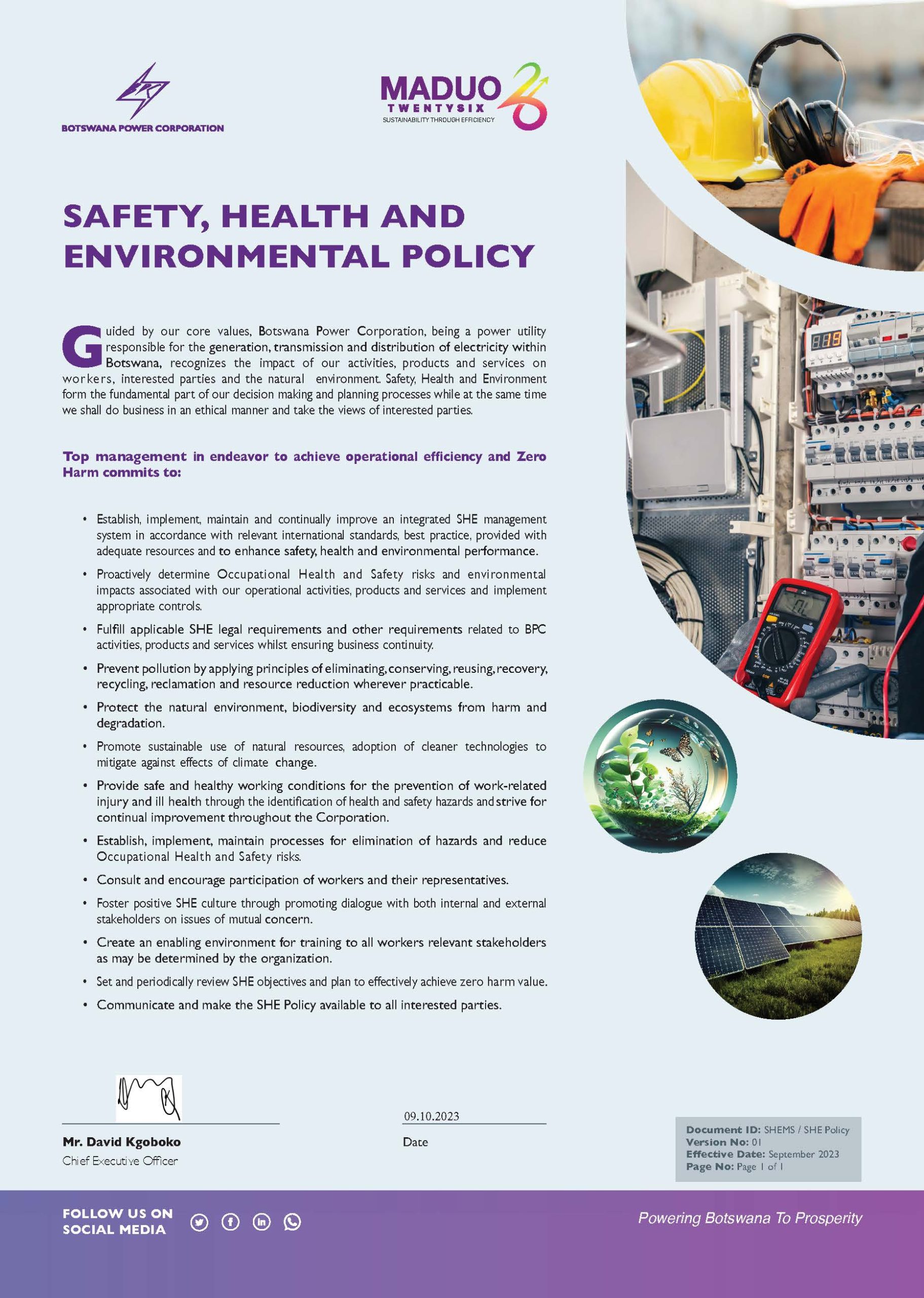SHER Policy

It is the policy of BOTSWANA POWER CORPORATION to provide all employees with a work environment which will protect, maintain and foster employees safety, health and environment
In addition to the concern for employees it is the CORPORATIONS Policy to ensure that the Machines, equipment and other assets are protected to ensure optimal utilization.
Each employee, in accordance with his or her function is required to accept individual responsibility for doing whatever is necessary to achieve the above objectives and shall observe the SAFETY , HEALTH and ENVIRONMENTAL STANDARDS and relevant STATUTES as required by the CORPORATION or embodied in statutory legal requirements.
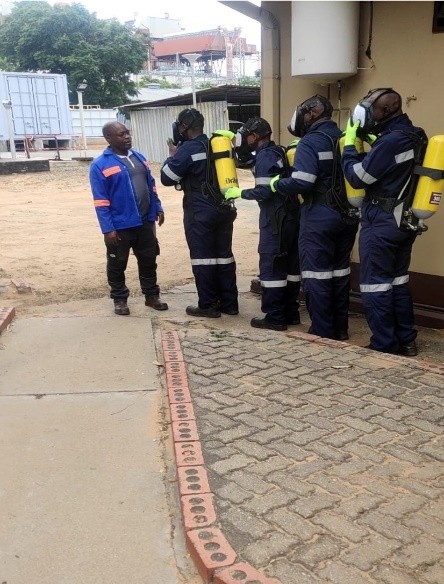
Figure 1 USE OF B.A.
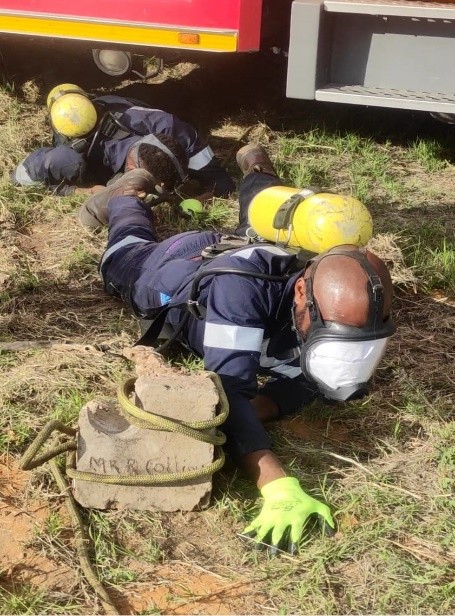
Figure 2 CONFINED SPACE RESCUE
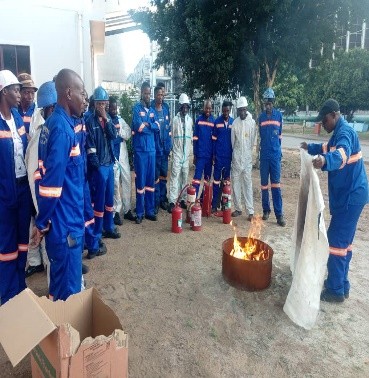
Figure 3: FIREFIGHTING SIMULATION
Fire safety training is crucial for minimizing fire-related incidents and ensuring workplace safety. It involves educating individuals on fire prevention, risk assessment, and proper fire extinguisher usage. Fire safety training typically covers the causes and principles of workplace fires, preventive measures, and how to respond to fire emergencies, including evacuation procedures, rescue and using fire alarms.
- Train today, survive tomorrow".
- "Sweat in training so you don't bleed in battle".
- "Don't train till you get it right, train till you can't get it wrong!".
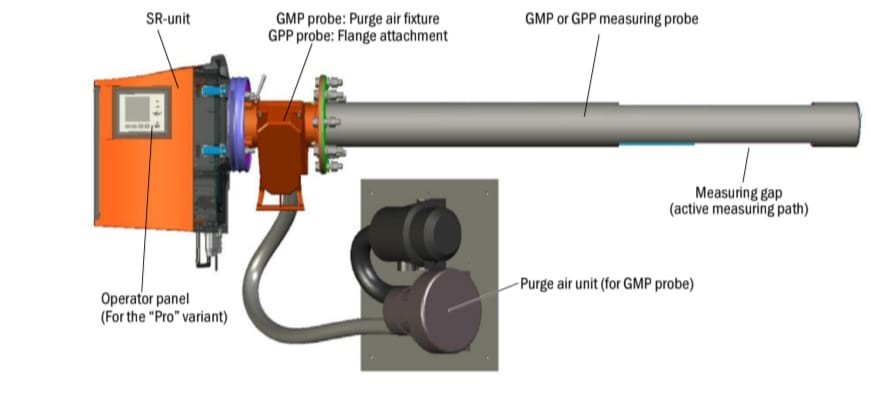
GM32 Emission analyzer
The GM32 is an in-situ gas analyzer used for monitoring and controlling emissions and processes MBPS. It measures gases like SO2, NO, NO2, and NH3, as well as pressure and temperature, directly in the gas duct
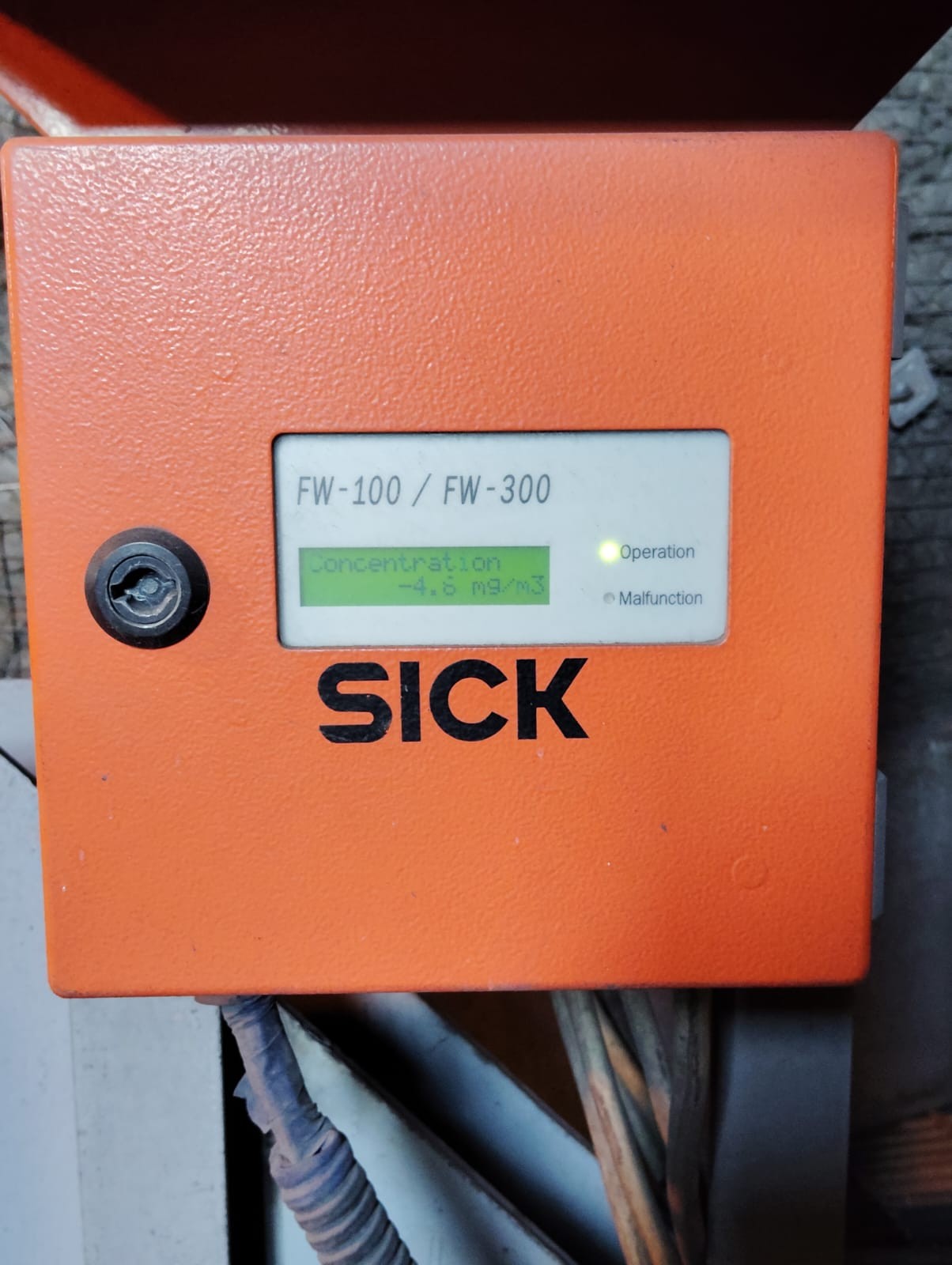
FW-100 / FW-300 Dust analyzer used in MBPS
The FW100 and FW300 dust analyzers are designed for continuous measurement and monitoring of dust concentrations in flue gas into chimneys. They use laser transmissometer to measure dust concentration, transmission, opacity, and extinction. These instruments are used to monitor emissions and ensure compliance with environmental regulations.
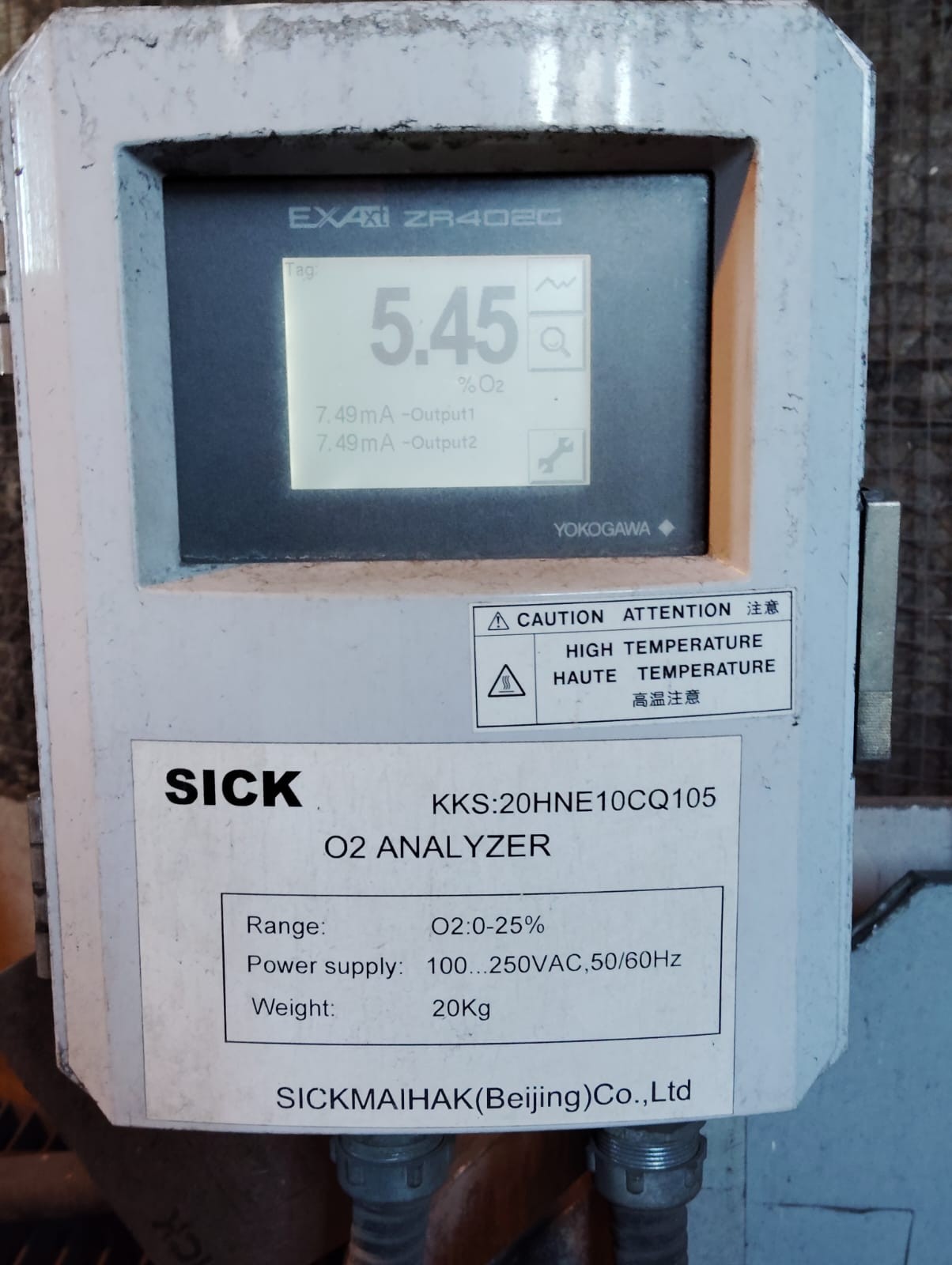
Oxygen Analyzer use in MBPS
An oxygen (O2) analyzer in a chimney measures the oxygen content in the exhaust gases, providing valuable information for optimizing combustion efficiency and environmental compliance.
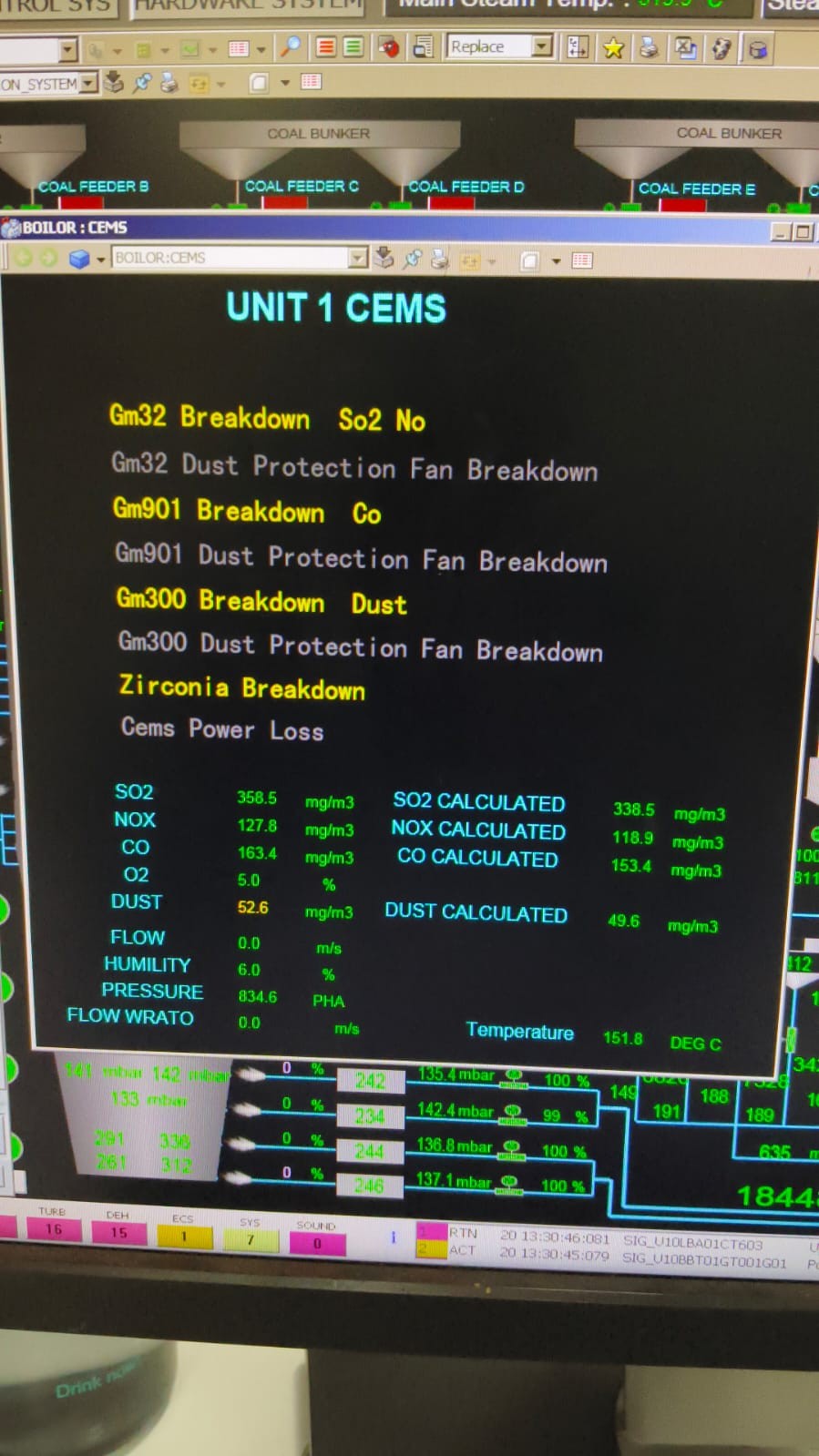
Emission monitoring system in MBPS CCR
As per the Environmental regulation’s emission value following in MBPS is mentioned below
| NOX: | NOX≤750mg/Nm3 |
| SO2: | SO2≤455mg/Nm3 |
| DUST | DUST≤50mg/Nm3 |
Pictures below shows a tree planting activity that was done by BPC in collaboration with Borotsi VDC in Bobonong and Borotsi Primary School in Bononong village.
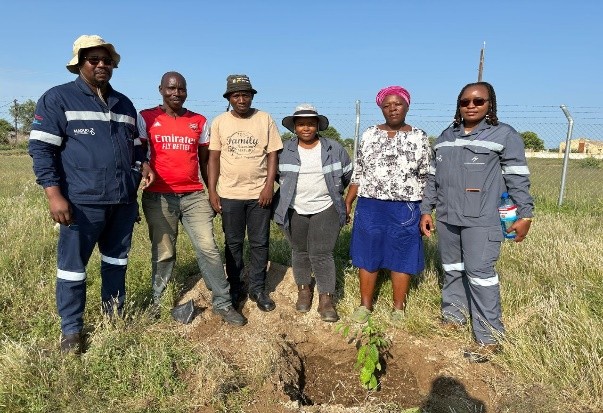
Figure 1: Tree planting at the Borotsi VDC Park, in Bobonong.
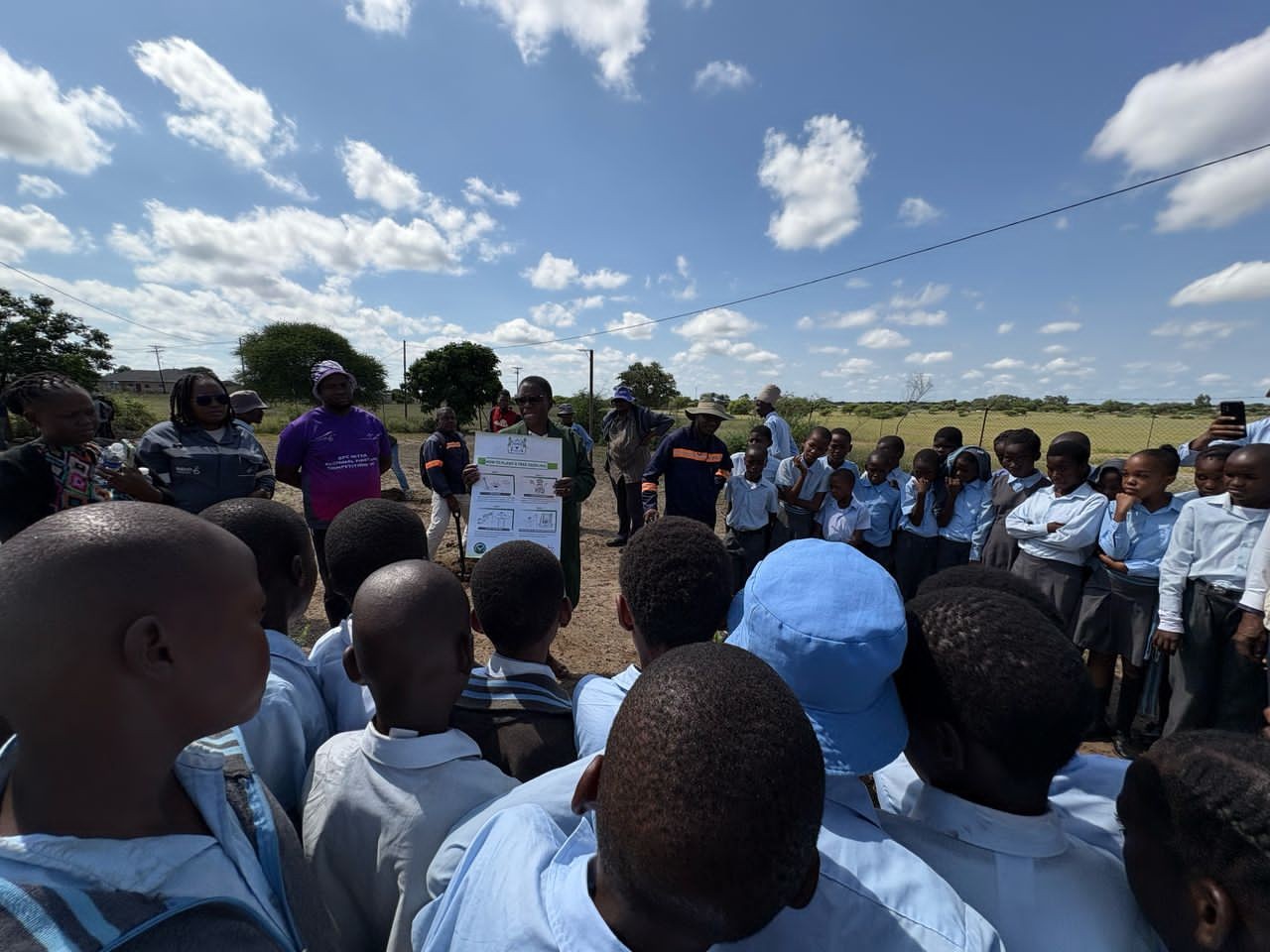
Figure 2: Tree planting activities at Borotsi Primary School, in Bobonong.
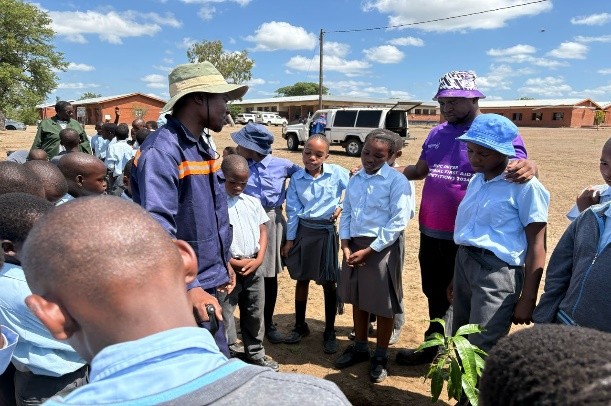
Figure 3: Forestry officer demonstrating tree planting, in Bobonong.
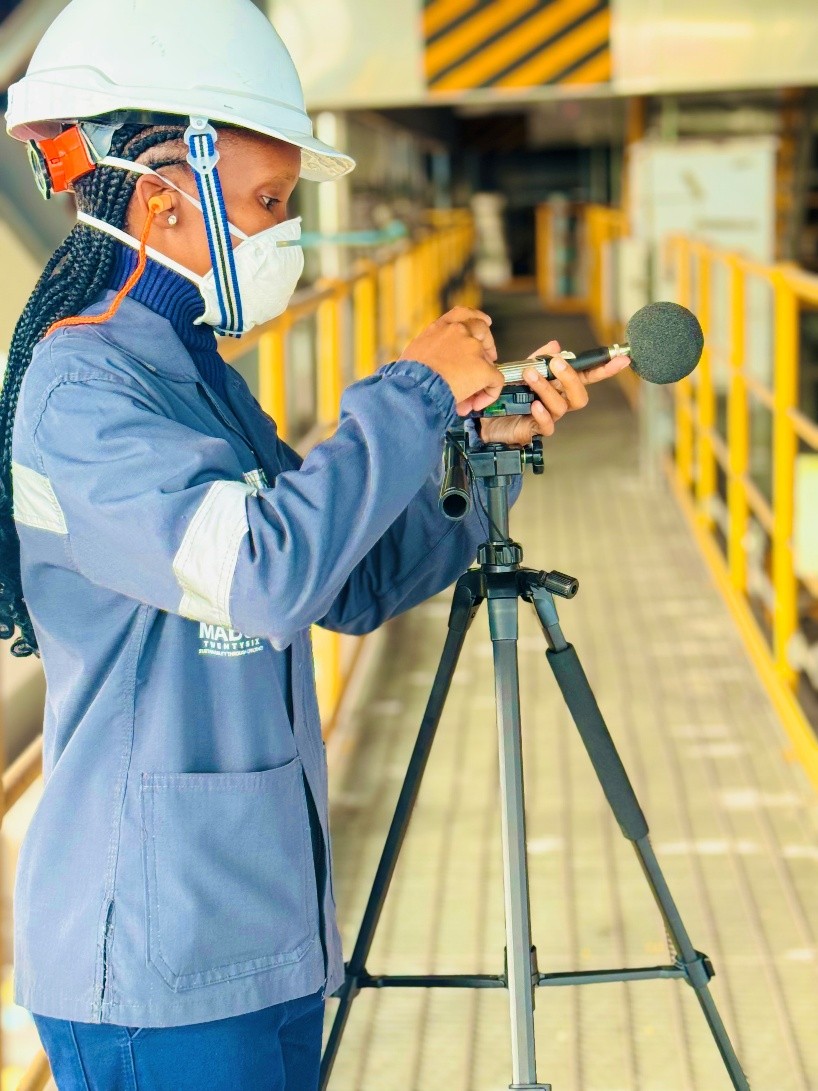
Fig 1.Nose monitoring using a sound level meter
Summary: Noise monitoring is vital for protecting human health and safety by identifying excessively loud environments, which can lead to hearing loss, stress, and reduced productivity. It ensures compliance with legal noise regulations, preventing fines and promoting a healthier living and working environment. Ultimately, it helps in proactively managing noise pollution to create more comfortable and safer surroundings for everyone.
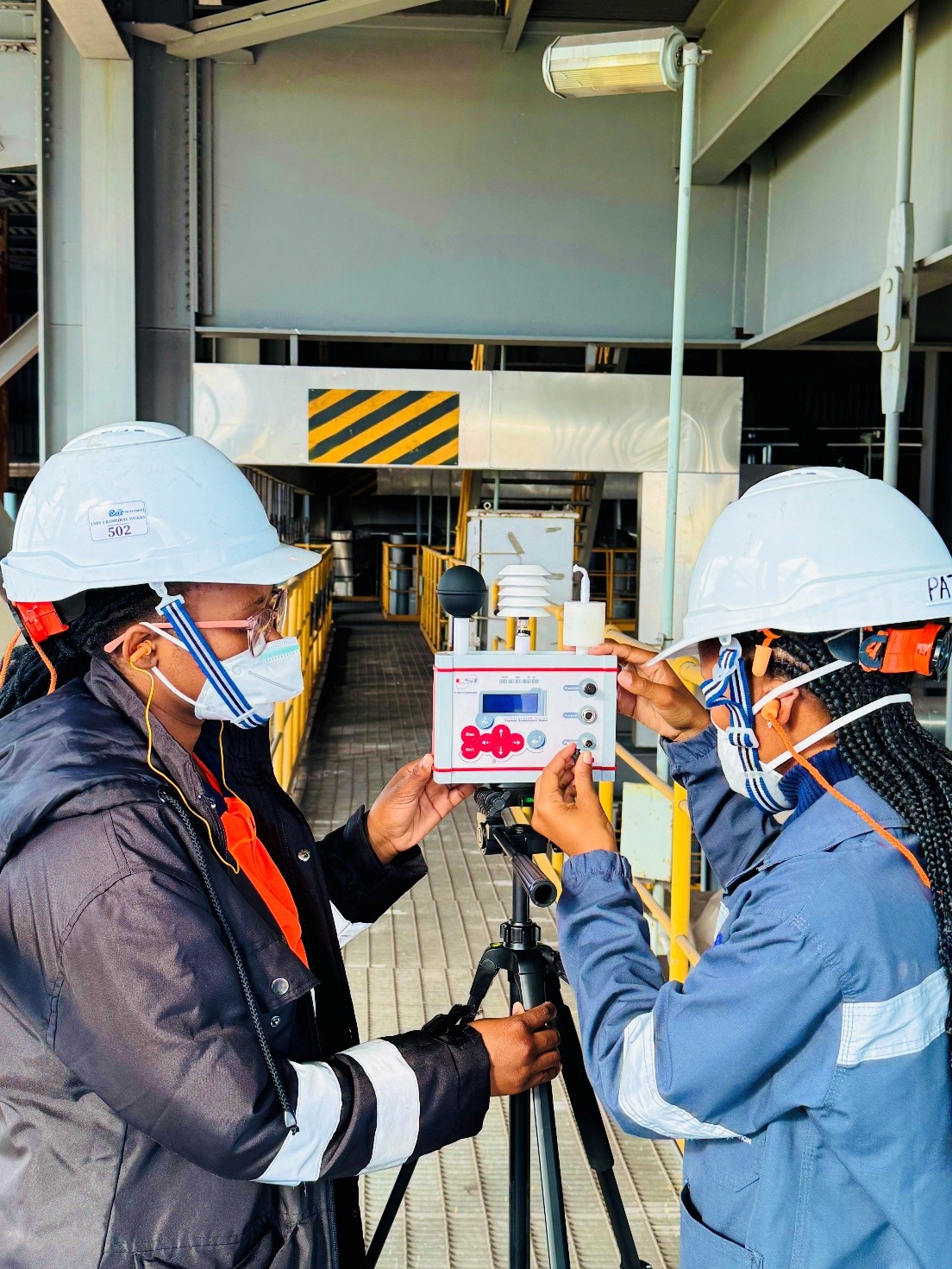
Fig 2; Thermal Monitoring using WBGT meter
Thermal monitoring using a WBGT (Wet-Bulb Globe Temperature) meter is crucial for assessing real heat stress risk by accounting for temperature, humidity, wind, and solar radiation, unlike simple air temperature readings. This comprehensive measurement helps prevent heat-related illnesses like heat stroke and exhaustion by providing actionable data for implementing work-rest cycles and hydration strategies. Ultimately, it ensures worker safety and productivity in hot environments, aligning with occupational health guidelines and preventing serious health consequences
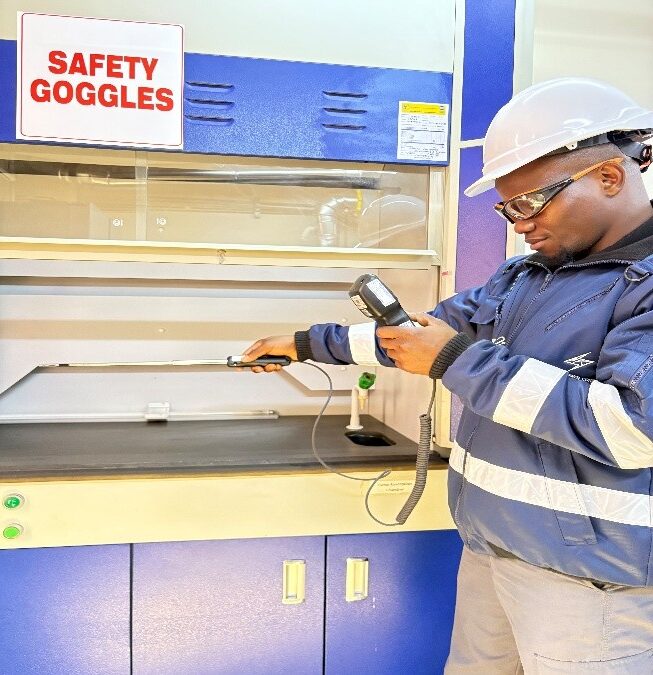
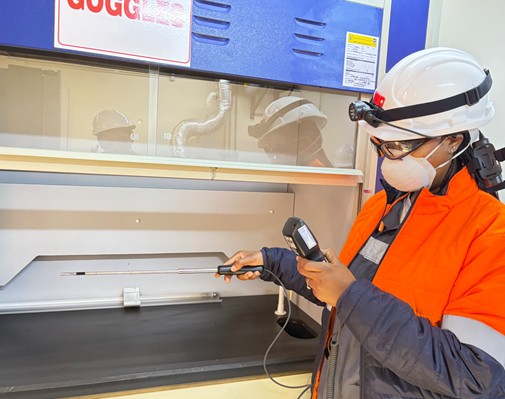
Pic: Fume hood capture velocity testing
Summary; Fume hood capture velocity testing is paramount for laboratory safety, as it directly verifies the hood's ability to effectively contain and exhaust hazardous airborne contaminants away from personnel. By measuring the airflow speed at the hood's opening, this testing ensures optimal performance for containment, preventing the escape of harmful fumes, vapors, and particulates into the lab environment.
Login into your account
With new BPC customer portal, you can pay and analyze your bills online, view your energy use and sign up for paperless billing.

